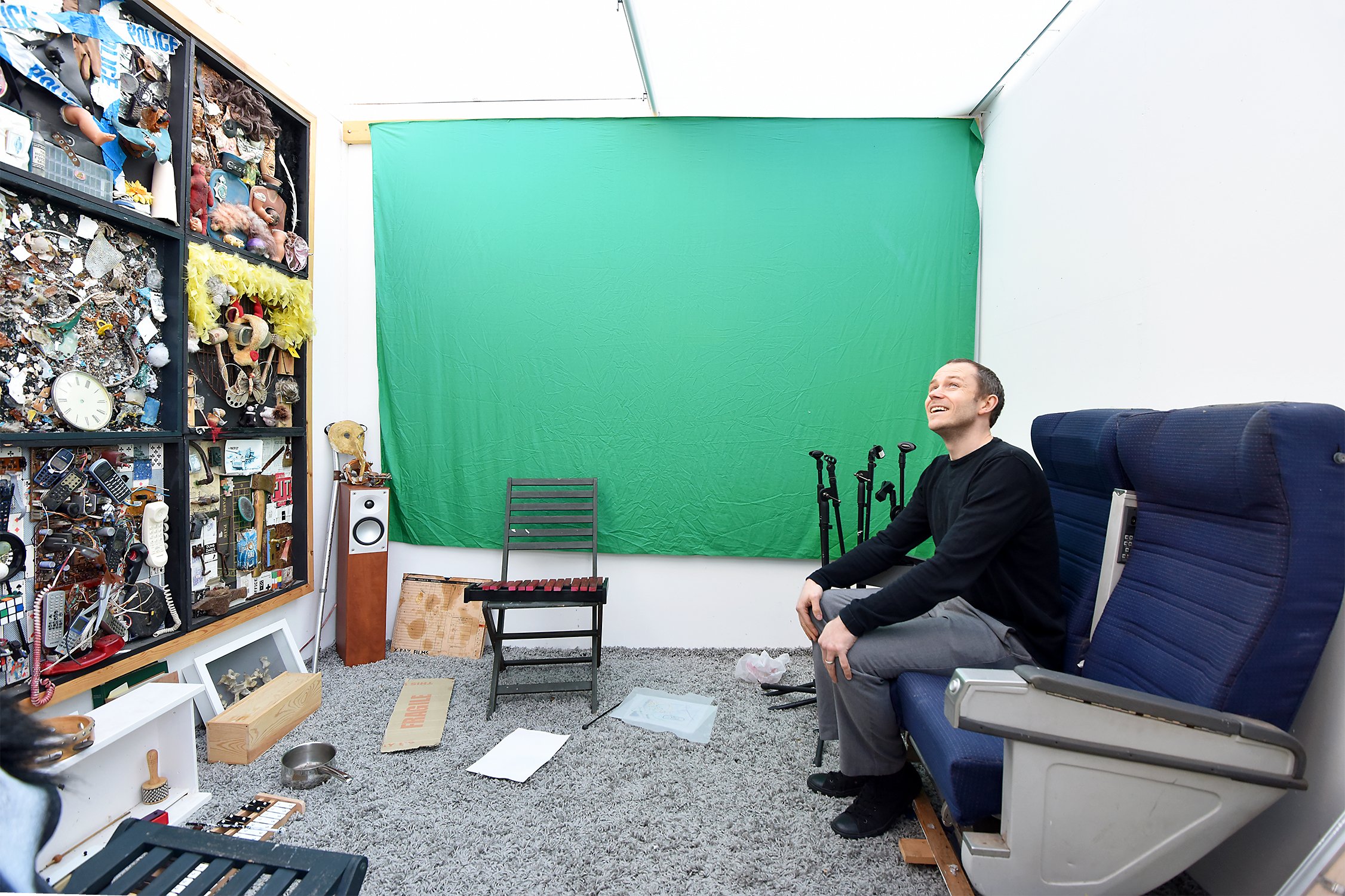
Camplin and Artist-led Culture
Hal Camplin is a mainly self-taught artist born in 1978 in London. He settled and set up a studio in Bristol in 2002 and engaged with the artist led scene across the South West UK. Hal is known for his punky D.I.Y. approach to art and uses whatever material comes to hand. This manifests in painting, sculpture, assemblages, film and raw often surreal performances.
“I had brain surgery for the first time when I was seventeen years old for a spinal condition called syringomyelia. I have experienced chronic pain since then.”
Camplin’s main early art influences are the London group of painters who emerged in the 1950s such as Bacon , Auerbach and Freud who mainly worked in figurative styles. He also enjoyed all forms of figurative and abstract expressionist painting from Munch to Pollock. Camplin has developed a painterly style where mark making and drawing with the paint is central to how he makes the images. He lives and breathe the quality inherent in the paint - I don’t simply colour in drawn forms as many artists do.
The pain in Camplin’s arm stopped him painting for a while so using his absurd and surreal creativity he made some work with his cat Larry in 2005-07 and he exhibited as an artist in many different art spaces in a series called Moggy Marks.
Camplin went further with his need to explore media with performance work in a giant badger outfit with a show called Badgertrap. Starring in upstaged talent show on BBC3 and touring throughout England, Edinburgh and Berlin from 2008-2014.
A second operation on his brain in his 30s led him to a period of depression and breakdown. He had to stop working but re-emerged with a show called Illness and Anarchy (2017) charting his shift through pain to humour and back again. This developed into a mobile social art project, When Pain Meets Art (2016-2019) where he went out to collaborate with people struggling to stay creative due to their experience of physical and emotional illness.
After studying art psychotherapy (2019-2022) Camplin was able to return to painting during the pandemic. He rediscovered the freedom in painting and connection with a healthy body and movement. He studied the abstract expressionists again and developed his own process being curious about spirtual connections. He found that the undertow laid out by Kandinsky, Rothko and Pollock is better explained through understanding of the unconscious. His health improved greatly and the colour in his paintings represents this shift.
Camplin Iistens to a variety of music whilst he works – often instrumental. “I find a lyrical style to accompany this – my mark making that responds to the music. I feel the richness of emotion through primary colours and tones which shape how they sing.” For Camplin it should be full enough like a satisfying meal. With the intensity and grounding weight in the paint. He finds relief, stimulation, and joy in the process.
Camplin studied active imagination as part of my work (a form of conscious meditative dream work developed by Carl Jung) and have greater access to my unconscious mind which also feeds into my art. This kind of practice creates infinite potential as is the case in our mainly inaccessible dream worlds. Camplin has written a dissertation covering using active imagination with art to tackle psychosocial effects for chronic pain.










